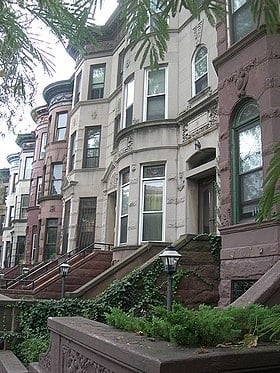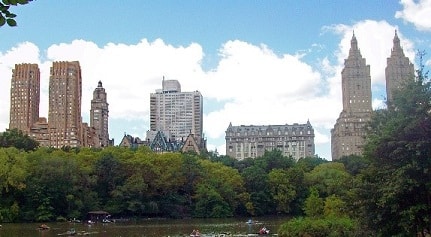Moving on UP
You loved the energy, the quickness of pedestrian steps, the boundless shopping, totally ignoring the exorbitant prices, homeless sleeping on the streets, motor bikes careening on the sidewalks, and hazards of…just about everything.
Disregarding the armed security personnel at your hotel, the garbage creating hazards on the walkways, and the increasing number of people being stabbed and shot on subway platforms and sidewalks, as you got into the cab and headed to the airport for your return flight to Georgia, New Mexico, Brazil or Thailand, you were giving serious consideration to moving your life (including the family, the business, the in-laws, the children and the pets) to an apartment in New York City.
Before you plant the FOR SALE sign on the front lawn, and pack the dishes, consider the challenges that Manhattan dwellers encounter 24/7/365.
Real Estate for Living
There are four principal options for a place to live in New York City: rentals, co-ops, condominiums, and private townhouses. In Manhattan, 563,972 (7%) of the households are renter-occupied while 179,726 (24%) are owner-occupied. There is no real estate in Manhattan that is considered a bargain…unless you believe a 10% reduction on a $5 million dollar, 2 – bedroom apartment to be a steal.
Rentals
Currently, the average rent for a 702 sq. ft apartment in Manhattan is $4,265. Rent varies by location: Battery Park City ($5,941), Little Italy ($5,800), TriBeCa ($5,800), SoHo ($5,447), Lincoln Square ($5,431) and Chinatown ($5,399). The median rent for a 1-bedroom apartment in the Upper West Side is 25% higher than the median rent in the Financial District.
Condo or Co-op
Average Manhattan apartment prices are based on whether the apartment is a condo or a coop. The price per square foot for a condo is higher than for a co-op because a condo owner gets real estate title, can purchase the apartment without board approval and can rent out the apartment as desired without limitation. The average sale price for condos run from $908,991 for a studio to over $9,846,869 for a 4-bedroom apartment. The average price per square foot ranges from $1,138 for a studio to $2,738 for a 4+ bedroom apartment.
The average price per square foot for a co-op is approximately 50% lower than a condo. The average sale price for a co-op runs from $553,734 for a studio to over $5,109,433 for a 4+ bedroom apartment. The average price per square foot ranges from $852 to $1,596. As apartments get larger, the price per square foot increases because the larger apartments are usually on higher floors and have better views and hence, get higher price(s) per square foot.
Townhouse

A townhouse is a private home where at least one wall is shared with another residence. These properties are quite rare in the New York real estate market and account for less than 2% of residential transactions.
The owner of a townhouse in New York is responsible for paying all property taxes, upkeep and repairs to the property, unlike a coop or a condo; however, no monthly payment is required for building management. There is no need for approval by the board of directors for the purchase or sale of such property. The sale of the building can be passed on to any third party without the prior approval other than the owner. Tax rates are determined annually by the NYC Council on the class of real estate. Prices for Manhattan townhouses range from $1.7 million to over $80 million (2020).
Co-ops Have a History
The history of the co-op dates back to the late 19th century. By co-owning buildings with other tenants, residents believed they could have more control over renovations and over who could be their neighbors. Co-ops were often more financially stable than other types of buildings during economic downturns because they could deny sales to potential buyers who had to borrow heavily to buy the apartment.
For decades New York apartment buildings on Park Avenue, Fifth Avenue, and Sutton Place telegraphed an aura of New York City power and prestige while the exterior facades and lobbies whispered privilege. Being acknowledged as worthy by the co-op boards who held control over these properties and creating a home amongst their residents was a sign of aspirational arrival.
As the economy of the city and the country changed, and the prices for apartments increased, the numbers of New Yorkers who could afford them declined. Many of the buildings tend to limit financial borrowing to a maximum of 50% of the purchase price and have stringent expectations about post-closing liquid assets.
© Dr. Elinor Garely. This copyright article, including photos, may not be reproduced without written permission from the author.
Upcoming in the Series:
Part 2. C0-OPS IN CRISES
Part 3. SELLING A CO-OP? GOOD LUCK!
Part 4. WHERE YOUR MONEY GOES
Part 5. BEFORE DIGGING THE MONEY PIT
(eTN): New York City: Nice place to visit but… Really want to live here? | re-post license | post content























